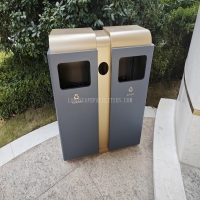Welcome to the website for landscape facilities products and knowledge.
How does the design of a landscape bar counter impact its resistance to damage from heavy snow loads?
The integration of a bar counter into a landscape design creates an inviting outdoor entertainment space, but in regions experiencing harsh winters, its structural resilience against heavy snow accumulation becomes paramount. The design's impact on snow load resistance is multifaceted, involving material science, structural engineering, and intelligent geometry.
Firstly, the choice of material is the foundational element. While traditional wood offers aesthetic warmth, its susceptibility to moisture absorption and subsequent cracking under freeze-thaw cycles makes it less ideal. Engineered composites, stainless steel with appropriate finishes, and reinforced concrete are superior choices. These materials possess high compressive strength to bear the weight and low water absorption rates to prevent damage from ice formation within the material's matrix. The inherent structural properties of these materials directly determine the counter's ability to resist deformation and collapse.
Beyond the material itself, the structural design of the support system is critical. A cantilevered design, while visually striking, may create a significant leverage point that increases stress on the connection points under a heavy, uniform load like snow. A more resilient design often incorporates robust, frequent supports—such as closely spaced steel posts or a continuous concrete base—that transfer the snow's weight directly to the foundation. The connections between the countertop and its supports must be engineered for vertical load-bearing capacity, often using steel brackets and bolts rather than simple adhesives.
The form and geometry of the countertop itself play a crucial role. A flat surface acts as a catchment area, allowing snow to accumulate deeply and exert maximum pressure. A sloped or arched profile is significantly more effective. A gently sloping surface encourages snow to slide off before reaching critical mass, while an arched design, much like a bridge, distributes the downward force laterally along its curve, greatly enhancing its load-bearing capacity without requiring excessive material thickness.
Furthermore, integrating subtle design features can mitigate risk. Installing discreet, low-voltage heating cables within the countertop structure can provide active snow melt, preventing accumulation altogether. Ensuring there are no flat ledges or intricate details that can trap snow and ice also contributes to the overall resilience. Proper drainage channels are essential to prevent water from pooling, freezing, and expanding, which can cause spalling in concrete or delamination in composites.
In conclusion, the resistance of a landscape bar counter to heavy snow loads is not a matter of chance but of deliberate design. It is achieved through a synthesis of selecting high-strength, weather-resistant materials, engineering a robust support structure, employing a snow-shedding form factor, and incorporating preventative elements. A well-designed counter becomes a durable, permanent fixture that withstands the elements season after season.
Related search:

Recommendation
Double-bucket garbage bin, outdoor, metal, multi-color, powder-coated, double-bucket trash can